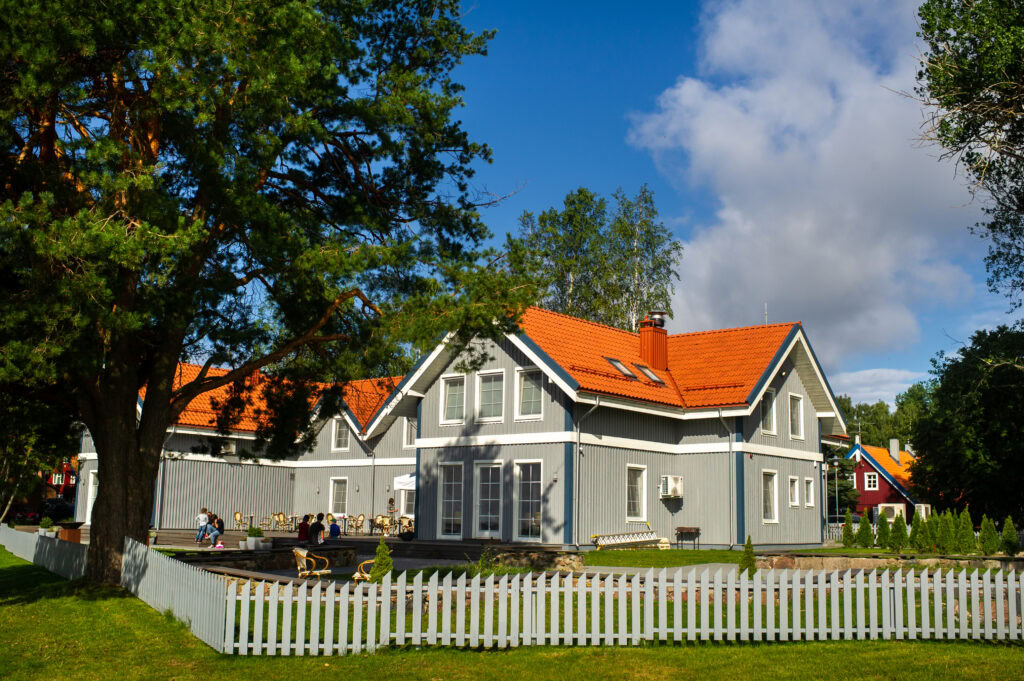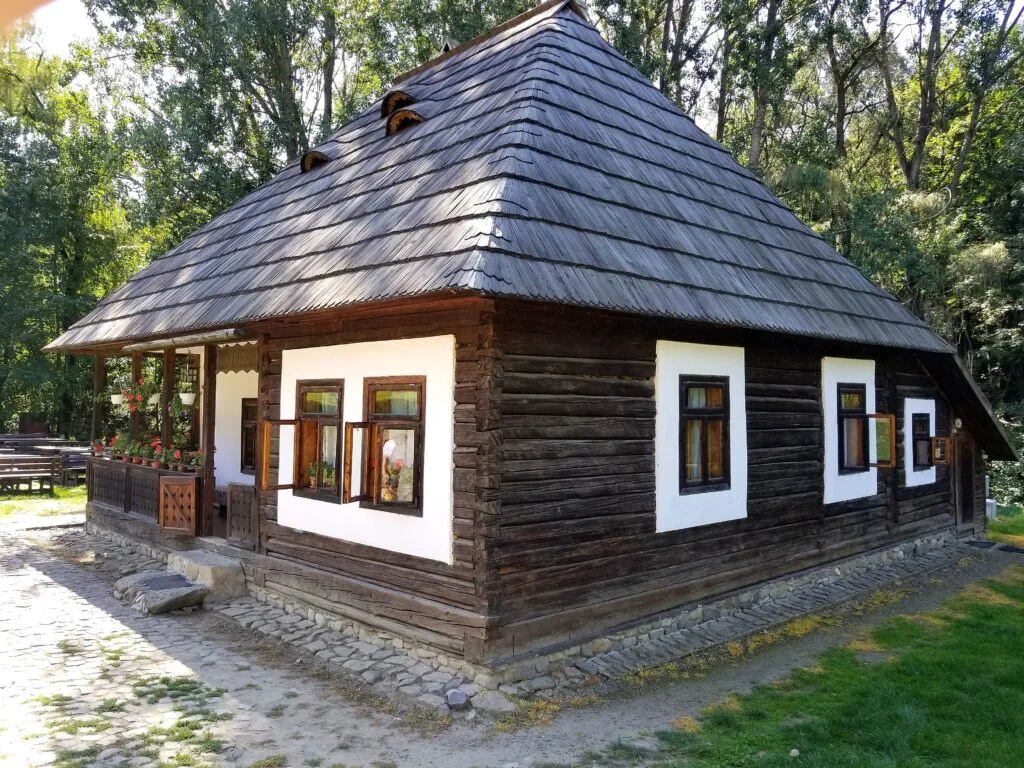
A roof design may not attract your interest as much as, for example, picking interior finishes or landscaping would, however, it is one of the most important decisions you will have to make when constructing or renovating your dream home.
A roof is not only the top part of your home itself, but also it covers it from weather incidents, influences energy efficiency, and is one of the biggest contributors to the amazing curb appeal of the place.
One of the most widespread roofing designs are hips and gables. They both possess distinct advantages and disadvantages.
What is a Hip Roof?
A hipped roof is a roof whose all sides come down to the walls, usually with a gentle pitch. Unlike a gable roof which only has two sloping sides and two vertical walls (called gables), a hipped roof has four sides sloped and no vertical ends.
This kind of roof is a favorite for both residential and commercial buildings due to its even eaves, refined symmetry, and higher wind resistance. The most outstanding feature of this roofing type is the fact that it is very stable, especially at the inward slope on all four sides, the reason why it is a must-have for those areas that are hit by strong winds or hurricanes more often.
From a structural engineering perspective, hipped roofs are better at evenly distributing the load around the perimeter of the building. They exert less pressure on the walls, and they remain more resistant forcing against the wall during a storm.
That said, hip roofs can be more expensive to construct. They require a more complex truss system or more skilled labor for stick-framing, and they use more materials overall.
Common Types of Hip Roof Designs:
-
Simple Hip Roof:
This is the most basic type of hip roof, with four equal sides that slope downwards and meet at the top to form a ridge. It’s clean, symmetrical, and provides good stability in high winds.
-
Cross Hip Roof:
A cross hip roof is formed when two hip roof sections meet, usually at a right angle. It’s commonly seen on L-shaped homes and adds dimension to the overall roof design.
-
Hip and Valley Roof:
This style is used on more complex homes with multiple wings. It features multiple hips and valleys where roof sections intersect, making it ideal for large or uniquely shaped houses.
-
Dutch Gable Roof:
A Dutch gable roof blends a hip roof with a small gable at the top. This design adds extra attic space or ventilation and offers a stylish look with added functionality.
What is a Gable Roof?
A gable roof is a basic and traditional style made up of two sloping surfaces that intersect at a central ridge. The vertical wall-shaped triangles at the ends are referred to as gables. It is one of the most effective types of roofs for drainage, ventilation, and construction cost.
Gable roofs are favored in cold and temperate zones due to their easy shedding of snow and rain. The style provides additional attic space, greater ventilation, and easier window or dormer installation to get natural light.
One of the advantages of a gable roof is that it is so simple. With fewer planes to the roof than a hip roof, a gable roof will normally need less material and less labor, so it is less expensive for homeowners.
There is one disadvantage to gable roofs: their vertical ends pick up the wind like a sail. In severe weather zones, they are more susceptible to damage from wind unless braced.
Common Types of Gable Roof Designs in California:
-
Classic Gable Roof
This straightforward roof style features two sloping sides that form a triangle at the top. It’s commonly used throughout California due to its clean design and ability to shed rain efficiently. From Sacramento ranch homes to Los Angeles bungalows, the classic gable roof is both functional and affordable, making it a frequent choice for residential builds.
-
Cross Gable Roof
A cross gable roof includes two or more gable sections that intersect, often creating extra depth in the home’s layout. You’ll often see this design in larger properties around San Jose or Fresno, where homeowners want varied rooflines and added architectural interest.
-
Front Gable Roof
In a front gable setup, the pointed end of the roof faces the street. This style adds a distinct profile and is especially common in older California homes, such as Craftsman-style residences in Pasadena or San Diego. It offers strong curb appeal and works well in homes with covered porches or entryways.
-
Dutch Gable Roof
The Dutch gable roof adds a small gable above a hip roof, blending two styles into one. This hybrid approach gives extra space in the attic while maintaining strong support against wind. It’s a popular solution in coastal California towns, where homeowners want both ventilation and visual charm without compromising on structure.
Hip Roof vs Gable Roof: Key Differences
Now that we have looked at the definitions and types of each roof, let’s compare the two directly across important categories:
1. Cost
Gable roofs are generally cheaper to build due to their straightforward design. They require fewer materials, simpler cuts, and less labor than hip roofs.
Hip roofs are more expensive in terms of materials and labor, though. Their additional complexity, especially in forms such as the cross-hip or Dutch hip results in a higher initial price.
Nevertheless, the lifespan value of a hip roof may be higher in high-wind areas, with the possibility of saving on repair costs or premiums on an insurance policy.
2. Structural Stability
Hip roofs are the obvious choice when it comes to wind resistance. The inward slope on all four sides makes them more streamlined, more evenly distributing stress and are perfect for hurricane country or high-wind regions.
Gable roofs, though fully stable in moderate climates, can collapse if gable ends are poorly braced. Additional strengthening like collar ties, hurricane clips, or extra framing is usually required for high-wind regions.
3. Attic Space and Interior Volume
Gable roofs generally create more usable attic space. Their single ridge and vertical walls make them conducive to higher ceilings, storage space, or even complete second floor living spaces in steep-pitched configurations.
Hip roofs, with their four sloping sides, restrict the quantity of central overhead space. If vaulted ceilings or attic storage are priorities, a gable roof is generally the way to go.
4. Drainage and Water Management
Both roof types provide great water runoff as long as they are properly designed. Gable roofs shed water down two slopes, while hip roofs run water off all four sides, avoiding pooling and help in even roof material wear.
That being said, valleys in complex hip roofs (particularly cross-hipped) can be problematic areas if not properly flashed or serviced.
5. Ventilation and Natural Light
Gable roofs provide more airflow and ventilation through vents located in the gable ends. They are also easier to add dormers, skylights, and gable windows, which can make a huge difference in bringing natural light into the house.
Hip roofs tend to need ridge or soffit vents, which might not allow for as much airflow. Installing windows becomes more difficult unless you include gable elements or dormers.
6. Curb Appeal and Style Compatibility
This one is subjective, but significant. Gable roofs are clean, classic, and well-suited to traditional American home styles like Colonial, Cape Cod, and Craftsman.
Hip roofs, especially more complex ones present a sleeker European-inspired look. They suit Mediterranean, French Provincial, and even modern homes.
All roof styles can be designed to beautify your house’s exterior, but hip roofs usually give a more elegant, stately look, whereas gable roofs give a simplicity and symmetry.
Which Roof Should You Choose?
At the end, it comes down to where you live, your design preferences, budget, and future use of your home.
Choose a hip roof if:
- You live in a hurricane or high-wind area.
- You want a low-maintenance, durable design.
- Curb appeal and architectural detail are high priorities.
- You’re okay with slightly less attic space.
Choose a gable roof if:
- You’re on a tighter budget.
- You want more attic storage or living space.
- Your area doesn’t experience high wind loads.
- Simplicity and clean lines match your home’s aesthetic.
Others even prefer to combine both styles with hybrid designs. A clipped hip or dormer gable roof can give way to attic space without sacrificing wind resistance. Similarly, a Dutch hip can enhance ventilation.
Final Thoughts
In the hip roof vs. gable roof debate, there is no universal solution. Both have advantages suited to certain climates, budgets, and appearance objectives. If you are constructing in an area of high winds or prefer uncluttered, symmetrical lines, a hip roof provides superior durability and visual appeal. If budget, attic storage, and simple ventilation are most desirable, a gable roof will be effective.
Consulting a knowledgeable roofer or contractor will guide you to customize your selection according to your location, house, and preferences.



